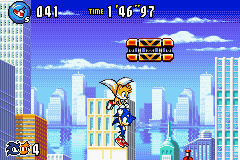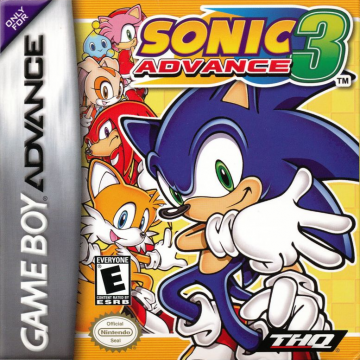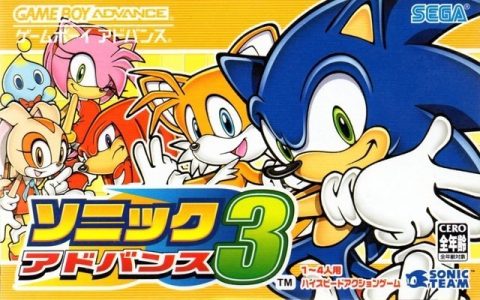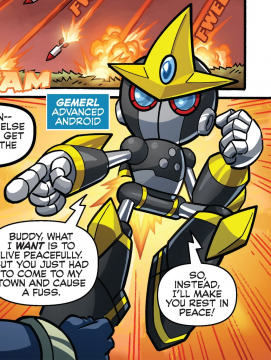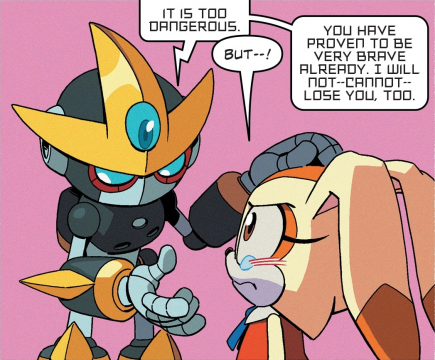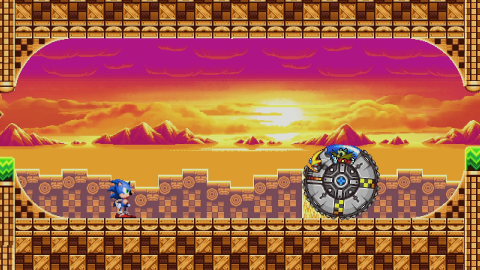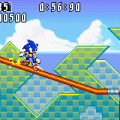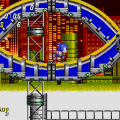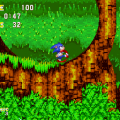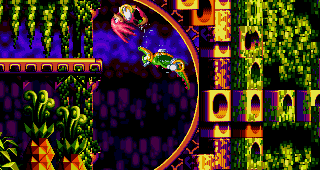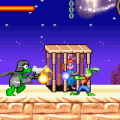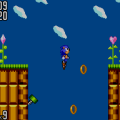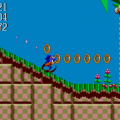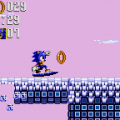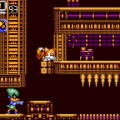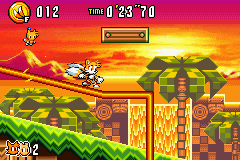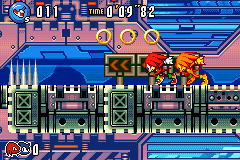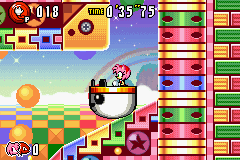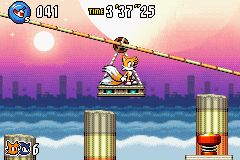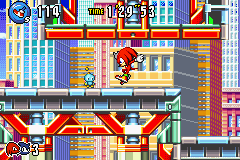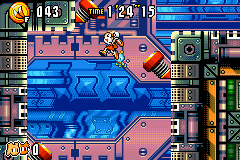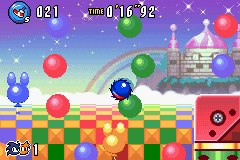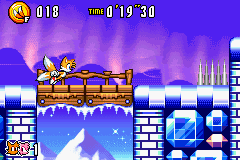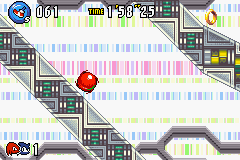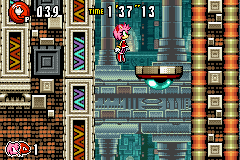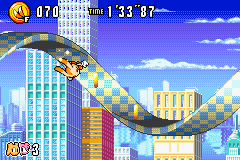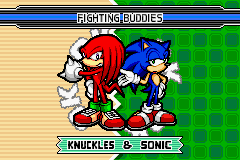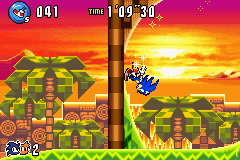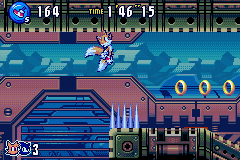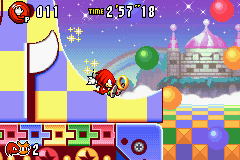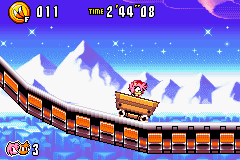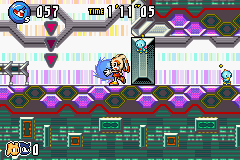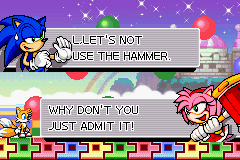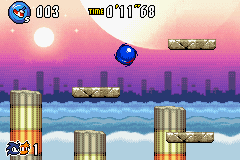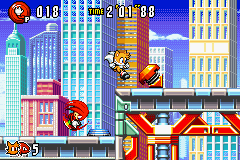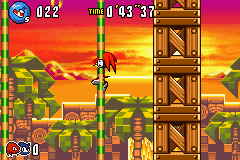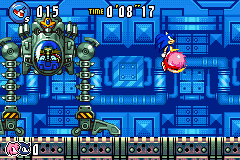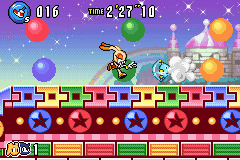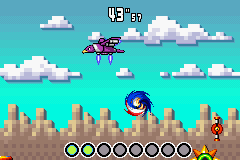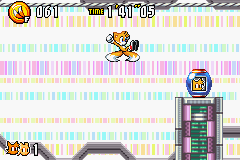- Sonic Generations
- Sonic the Hedgehog
- Sonic the Hedgehog 2
- Sonic CD
- Sonic the Hedgehog 3
- Sonic & Knuckles
- Sonic the Hedgehog 4
- Sonic Mania
- SegaSonic The Hedgehog
- Sonic The Fighters
- Sonic 3D Blast
- Knuckles’ Chaotix
- SegaSonic Bros.
- Sonic the Hedgehog (8-bit)
- Sonic the Hedgehog 2 (8-bit)
- Sonic Chaos
- Sonic the Hedgehog Triple Trouble
- Tails’ Skypatrol
- Tails Adventures
- Sonic Labyrinth
- Sonic Drift
- Sonic Drift 2
- Sonic Blast
- Sonic R
- Murder of Sonic the Hedgehog, The
- Sonic Advance
- Sonic Advance 2
- Sonic Advance 3
- Sonic Rush
- Sonic Rush Adventure
Sonic Advance 3 is a curious game. It disregards the speed-focused design of its predecessor, but it doesn’t return to the classic style of the original Advance. Instead it forges its own path, partially based on the teamwork-based systems of Sonic Heroes, to create an experimental co-operative 2D Sonic platformer. One that’s long-winded and often tedious, but nevertheless ambitious enough that it might be worth trying out.
The story’s slightly more extensive this time around, with an opening cutscene establishing that Dr Eggman has split the world into seven pieces whilst experimenting with the powers of Chaos Control. Everyone’s been scattered to the four winds, and with the assistance of his latest creation Gemerl (who looks strikingly like Emerl from Sonic Battle), Eggman’s out to conquer these new worlds. Sonic and Tails have somehow stuck together, and it’s up to them to find their friends, collect the Chaos Emeralds and stop Eggman and Gemerl.
Sonic Advance 3 sticks to the usual 2D platforming gameplay, but now introduces a partner character. They’ll follow you everywhere, and can pull off special maneuvers called tag actions that are activated by holding the R button until they appear in your hands as a ball and letting go. You can choose from Sonic and Tails at the beginning, and you unlock Knuckles, Amy and Cream by beating act 3 of every second zone as Sonic (though this weirdly isn’t communicated within the game itself).
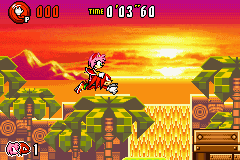
Every character has a specific set of tag actions depending on whether you’re on the ground or in the air: Sonic boosts you forward, Tails can throw you upwards and carry you for a short time, Knuckles can be thrown at breakable walls or used to glide, Amy launches you up with her hammer, and Cream can let you use Cheese to attack enemies and give you an vertical lift.
The big difference though is that each partner character drastically affects your own character’s moves. For example, having Amy as a partner lets you use her hammer but you no longer roll while jumping, while Knuckles gives everyone stronger attacks. These also impact individual characters, such as how Tails’ flight changes hugely depending on who your partner is.
There are many different combinations to play around with, which opens up the places you can explore and allows you to try different routes. This is enhanced by the greater variety in level design, with stages varying from speedy rollercoasters and obstacle-filled gauntlets to slow-going labyrinths and gimmick-driven acts. Some stages will work better with a certain team than others, so it’s worth revisiting them to see what you can do and find.
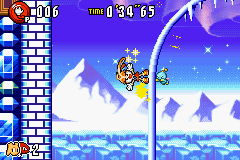
Admittedly, it can be easily missed due to how long it takes to get the full selection of characters, and the way their abilities can be restricted makes the early game fairly rough. It doesn’t help that the level design is more frustrating than before, often throwing in bottomless pits, sudden spikes and obstacles that can crush you from the beginning of the game.
Even the controls are weird, taking Advance 2‘s system of tying your top speed to your ring count and applying that to your movement in general. Moving around and jumping is sluggish with few or no rings, and then gradually becomes faster and slippery the more you have. It’s quite wonky having to constantly readjust your understanding of the movement, whether you’re getting more rings or losing them to yet another sudden trap.
Advance 3 seems like it’s designed for more dedicated play, where lengthy investment in the mechanics and character combinations will be rewarded rather than the quick blasts its predecessors excelled with. This applies further to the newly introduced hub areas, where you can visit three acts in any order, and a boss fight that unlocks after beating all three acts. Getting a game over means you only have to play from the most recent stage instead of repeating the whole zone, which is a nice mercy considering how challenging these can get.
The boss fights are particularly tough, delivering plenty of attacks and only allowing you to deal damage at specific moments. It’s perhaps here where the newly introduced co-op works best. Right from the start, two players can work through the main campaign together, taking control of each character and utilizing their distinct abilities to explore and complete levels. Do keep in mind that players share rings and lives, and getting hit or dying will detract from both. The bosses are often designed in a way that encourages players to work together in dealing damage, which is great for co-op play but makes them more annoying if you’re going solo.
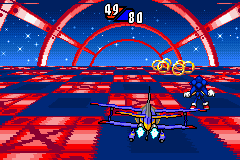
You can also find bonus stages in the hub world to earn more lives, and a special stage spring that you’ll need to unlock. To do this, you must find ten Chao hidden in each zone (three per act and one in the hub); incidentally, this is the most you’ll see of the Chao as the Tiny Chao Garden isn’t featured in Advance 3. Getting all ten Chao causes special keys to appear in every level, which will let you access the special stage if you grab a key and beat the level without dying. In the special stages, you stand on the Tornado plane’s wings and grab enough rings while avoiding bombs to get the Chaos Emerald. These are thankfully quite straightforward thanks to being easier to judge where the rings are and the more generous ring requirements, and you only need to get the seven Emeralds once to see the true final boss.
However, the method of accessing the special stages at all is tediously dragged out, and that also plays into navigating the hub worlds to find specific acts or even swapping characters. You can only change characters at the zone select area at the start of each hub, and while the hub structure grants you a space to relax and test character moves, it’s frustrating how long it takes to get anywhere due to their winding designs.
Advance 3 is full of interesting and well-executed ideas intertwined with dull and frustrating ones, to the point where it’s difficult to recommend one way or the other. But that also makes for an unusual sequel that tries to do more than it was expected to, which is always admirable. If you’re up for a different spin on the Sonic Advance style, it’s worth taking at your own pace and seeing how you find it.
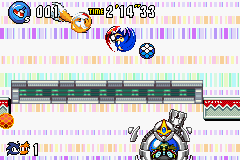
At least the presentation’s roughly as good as usual. The graphics maintain the smooth and fast framerate, while also introducing plenty of new character animations to give their distinct team-ups more personality, along with impressively rendered backgrounds for zones such as Sunset Hill, Route 99 and Chaos Angel are impressive sights.
The soundtrack, which was primarily composed by Hideaki Kobayashi and Kenichi Tokoi, creates numerous exciting and varied tunes for the levels, with more distinct instruments used and unique arrangements for each zone’s hub and main acts. This is also another game that features Masato Nakamura’s Sonic work, rearranging his theme for Green Hill Zone from Sonic 1 throughout Sunset Hill Zone.
On a side note, this is the first 2D Sonic game to feature voiced dialogue, in the form of soundbites when characters complete levels, die or get chosen. As a result, Advance 3 is the final game to utilize the original English dub voice cast who originally debuted back in Sonic Adventure. For the rest of the 2000s, the Sonic games used the 4Kids Entertainment cast who had previously appeared in the English dub of the Sonic X anime.
Despite this being their only in-game appearance, Gemerl has occasionally shown up in other Sonic media, mainly in the final arcs of the Archie comic and throughout the IDW comic as a friend and protector of Cream and Vanilla. They also made a cameo of sorts in the final episodes of the Sonic Prime cartoon, which recreated the boss fight from Sunset Hill Zone in a flashback sequence cobbled together from Advance 3‘s original visuals/music (except for the Nakamura-based tunes) and new sprites.
